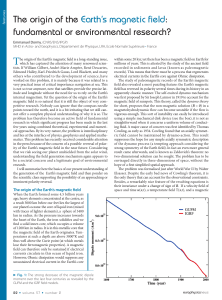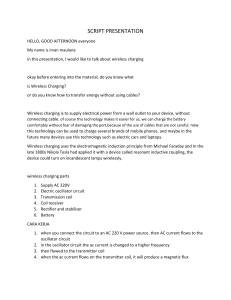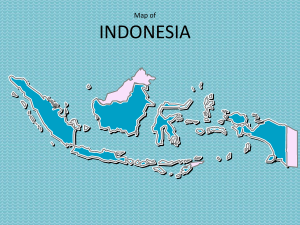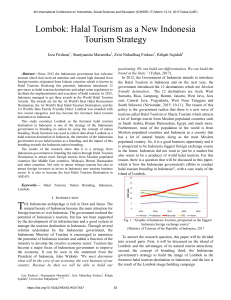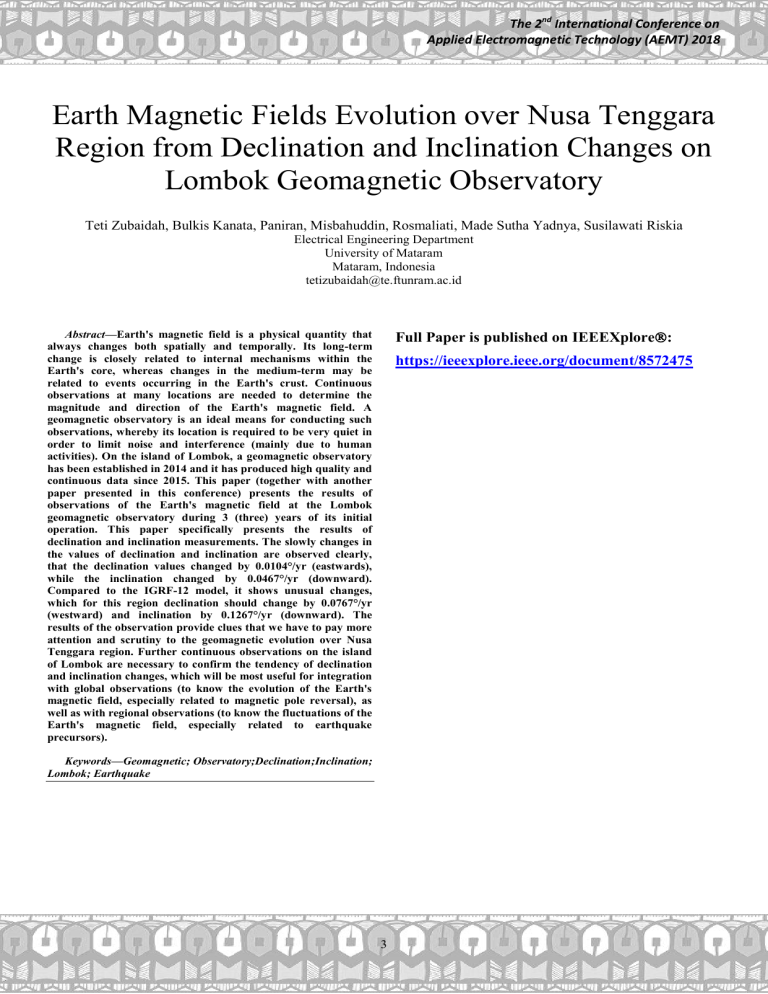
The 2nd International Conference on Applied Electromagnetic Technology (AEMT) 2018 Earth Magnetic Fields Evolution over Nusa Tenggara Region from Declination and Inclination Changes on Lombok Geomagnetic Observatory Teti Zubaidah, Bulkis Kanata, Paniran, Misbahuddin, Rosmaliati, Made Sutha Yadnya, Susilawati Riskia Electrical Engineering Department University of Mataram Mataram, Indonesia [email protected] Abstract—Earth's magnetic field is a physical quantity that always changes both spatially and temporally. Its long-term change is closely related to internal mechanisms within the Earth's core, whereas changes in the medium-term may be related to events occurring in the Earth's crust. Continuous observations at many locations are needed to determine the magnitude and direction of the Earth's magnetic field. A geomagnetic observatory is an ideal means for conducting such observations, whereby its location is required to be very quiet in order to limit noise and interference (mainly due to human activities). On the island of Lombok, a geomagnetic observatory has been established in 2014 and it has produced high quality and continuous data since 2015. This paper (together with another paper presented in this conference) presents the results of observations of the Earth's magnetic field at the Lombok geomagnetic observatory during 3 (three) years of its initial operation. This paper specifically presents the results of declination and inclination measurements. The slowly changes in the values of declination and inclination are observed clearly, that the declination values changed by 0.0104°/yr (eastwards), while the inclination changed by 0.0467°/yr (downward). Compared to the IGRF-12 model, it shows unusual changes, which for this region declination should change by 0.0767°/yr (westward) and inclination by 0.1267°/yr (downward). The results of the observation provide clues that we have to pay more attention and scrutiny to the geomagnetic evolution over Nusa Tenggara region. Further continuous observations on the island of Lombok are necessary to confirm the tendency of declination and inclination changes, which will be most useful for integration with global observations (to know the evolution of the Earth's magnetic field, especially related to magnetic pole reversal), as well as with regional observations (to know the fluctuations of the Earth's magnetic field, especially related to earthquake precursors). Full Paper is published on IEEEXplore: https://ieeexplore.ieee.org/document/8572475 Keywords—Geomagnetic; Observatory;Declination;Inclination; Lombok; Earthquake 3

